Search Images
Browse Content (p. 1631)

Image
Amarna Letter from Burna-Buriash II to Amenhotep III
This is one of the Amarna letters. In this clay tablet, the Kassite king Burna-Buriash II (in Babylon, Mesopotamia) corresponds with the Egyptian pharaoh Amenhotep III, asking him to send more gold. Most of the Amarna letters were written...
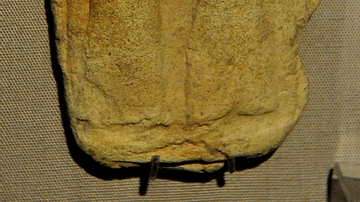
Image
Man & Woman Plaque, Ur
In this clay plaque, an affectionate couple is depicted (domestic scene?). The man and the woman are looking at and holding each other. From Ur, southern Mesopotamia, modern-day Iraq. Old-Babylonian period, 2000-1600 BCE. (The British Museum...
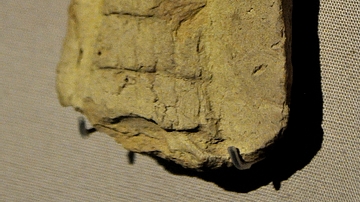
Image
Lama
This clay plaque depicts the goddess Lama. Her hands are raised in meditation. People prayed to Lama for their personal protection. Lama always wears a long tiered-skirt. From Ur, southern Mesopotamia, modern-day Iraq. Old-Babylonian period...
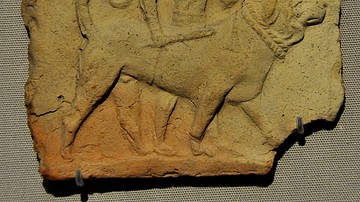
Image
Man & Dog Plaque, Sippar
This clay plaque depicts a striding man who leads a large dog (domestic scene?). From Sippar (modern-day Tell Abu Hubba, Babel Governorate, Iraq), Mesopotamia. Old-Babylonian period, 2000-1600 BCE. (The British Museum, London).
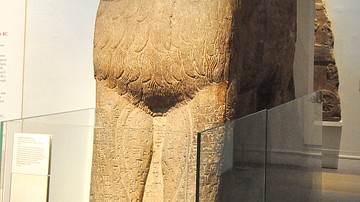
Image
Colossal Guardian Lion from Nimrud
Colossal guardian lion found at the entrance to the temple of Ishtar, Sharrat-niphi. The cuneiform inscriptions on the statue mention the name of Ashurnasirpal II as the temple's builder. This lion was one of a pair of lions which were found...
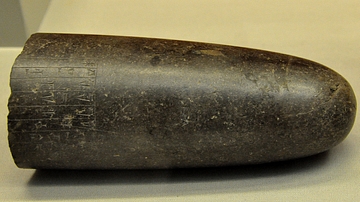
Image
Stone Weight from Sippar
The inscription, unusually for a weight, is cut in reverse. It mentions that this stone weight was dedicated to the temple of Shamash, the sun god, at Sippar. It precisely gives the weight as 10 mina, 15 shekels, a little more than 5 kilograms...
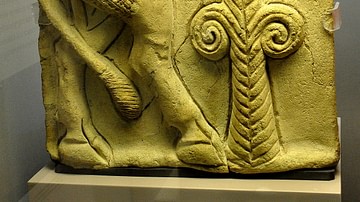
Image
Terracotta Plaque Dedicated to Gula
This fragment was part of a large terracotta plaque which depicts a bull in front of a tree. The cuneiform inscriptions on the bull's thigh mention that the plaque was dedicated by a man named Sin-Eriba to Gula, goddess of healing. From Mesopotamia...
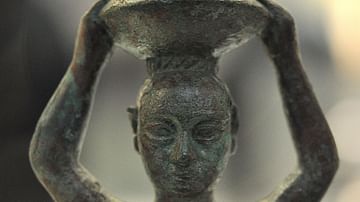
Image
Foundation Figurine of Ur-Nammu
This is a close-up image of the upper part of a copper figurine of Ur-Nammu, king of Ur. The lower half of this foundation figurine is not shown but it was inscribed with cuneiform inscriptions which mention that the figurine is dedicated...
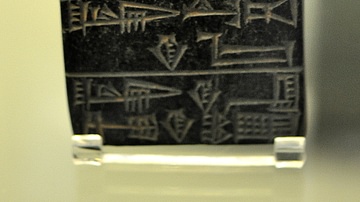
Image
Foundation Tablet of Ur-Nammu
The cuneiform inscriptions on this tablet mention the name of Ur-Nammu, king of Ur and founder of the Sumerian 3rd dynasty of Ur. From the temple of Inanna at Uruk, southern Mesopotamia, modern-day Iraq. Neo-Sumerian period, 2112-2095 BCE.
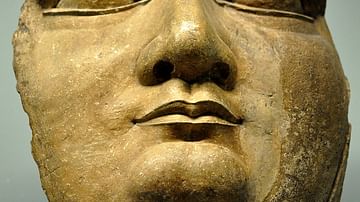
Image
Face of a Colossal Figure from Nineveh
This carved stone face probably belonged to a head of a sphinx. The Assyrian king Sennacherib ordered several colossal statues to be made in his new palace. Such giant statues were thought to have a supra-natural protective power. From the...